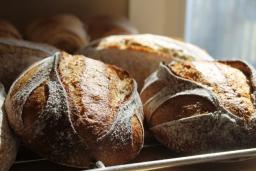
Instant vs Active yeast in overnight fermentation
Hi,
I posted this on another thread earlier but not sure if anyone would see my question there. I'm also trying out this recipe

Hi,
I posted this on another thread earlier but not sure if anyone would see my question there. I'm also trying out this recipe

I’ve never been one to follow a recipe to a tee. I recently read Tartine Bread and it got me thinking how to manage my time so I can bake on days I work as well as days off. So essentially, what I out of the book was that the baker can manipulate time and temperature to make any time frame work to make bread.

Today we announced the focus for our May "Taste-and-Tell": Cold (Retarded) Fermentation. The "Taste-and-Tell" is a monthly event held by the Chicago Amateur Bread Bakers. Each month we introduce a topic related to bread baking.
Some information about this month's focus topic:

Hello-
I've been trying a few baguette methods that call for a retardation in the refrigerator, and what confuses me is that many people say they get a bit of a rise out of their dough while it's in there. I get nada. The dough comes out pretty much exactly as it went in. Which leads me to ask, what's the point of the cold retardation? If yeast activity slows to the point of pretty much total inaction, the process isn't doing me much good, is it?


I frequently need to retard my dough to fit baking into my schedule. My question is, is it preferable to retard during the bulk fermentation stage, or to shape the loaves and retard during proofing. Or, is it just a matter of taste?
Thanks!

Hi to all of you guys and girls, and thanks a million for this precious website.
I'm french, and pretty new to making bread even though i've always dreamed to. I just love bread and, unfortunately, the bread you can find nowadays in french bakeries is pretty much unedible nine times out of ten. Tasteless, chewless and essentially stale only a couple hours after you bought it, not even mentioning the price which, sincerely, gets just about scandalous these days...

A few times in recent weeks I have baked the Vermont sourdough from Jeffrey Hammelman's book 'Bread' or the variation called Norwich More-Sourdough on the Wild Yeast Website (here). Familiarity has made me feel confident enough to make my own small modification to the recipe so this weekend I made a version that replaced all of the rye flour in the Wild Yeast recipe with spelt flour.